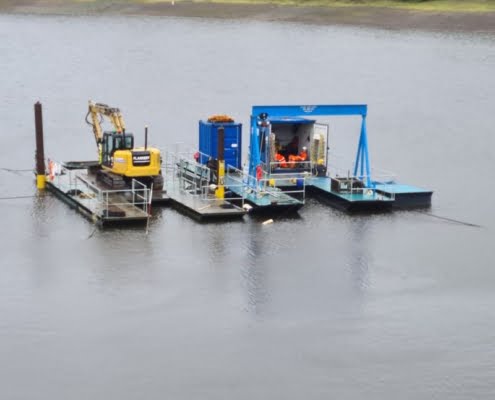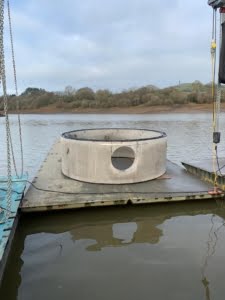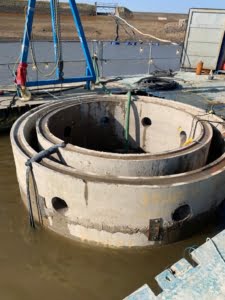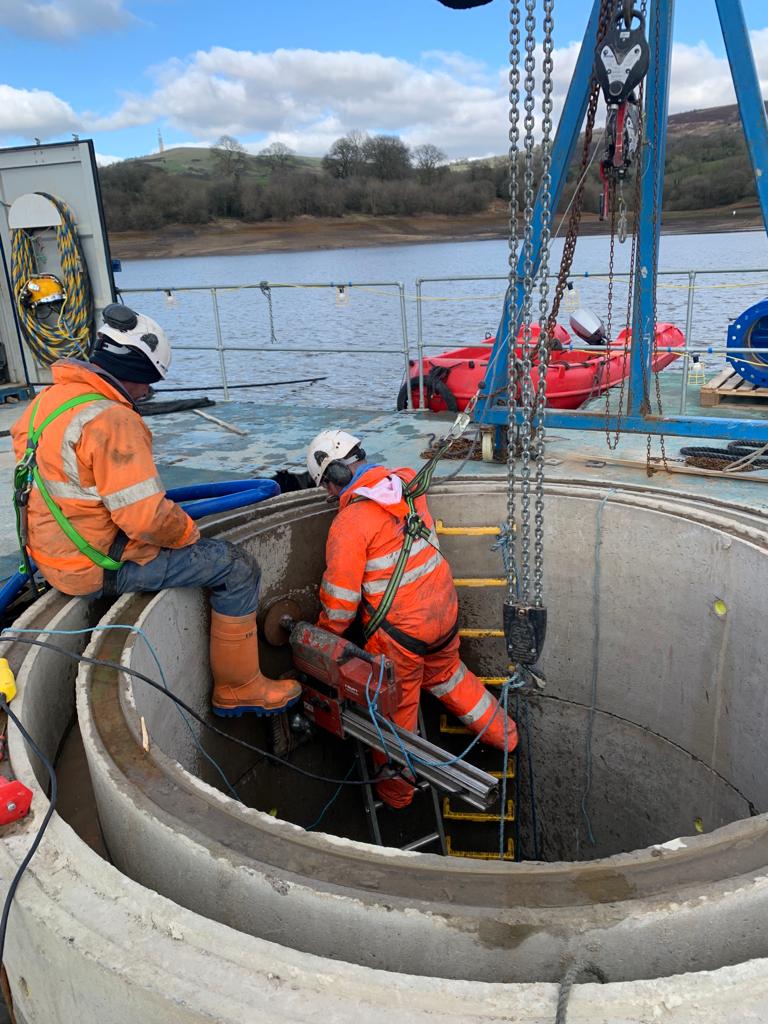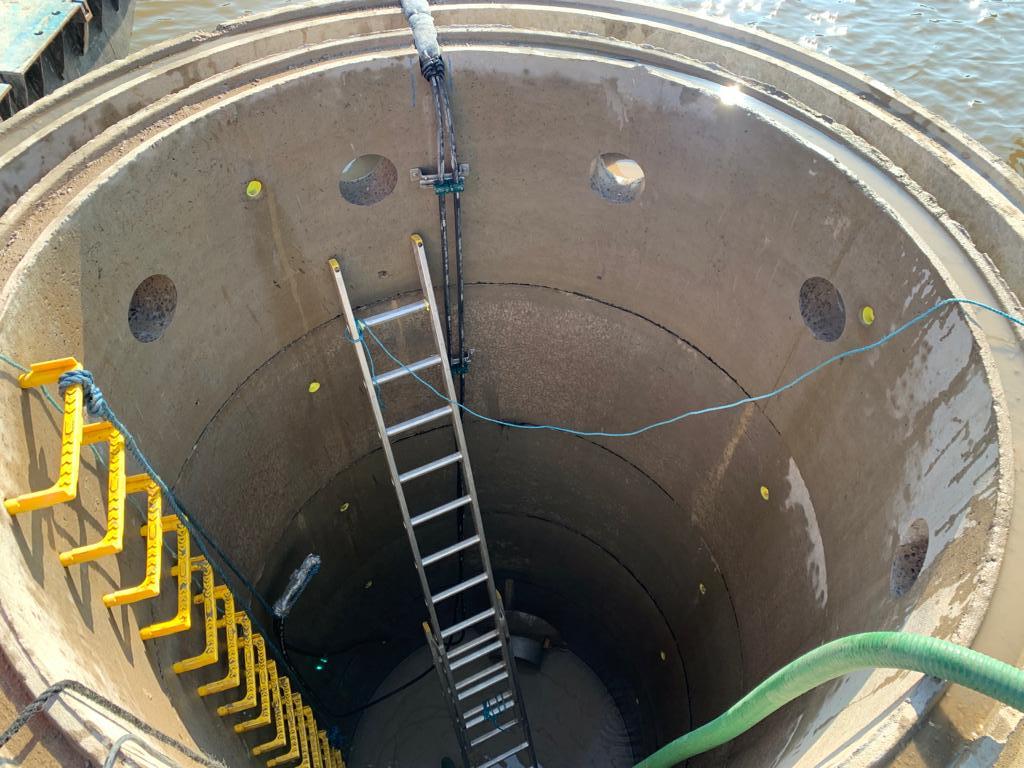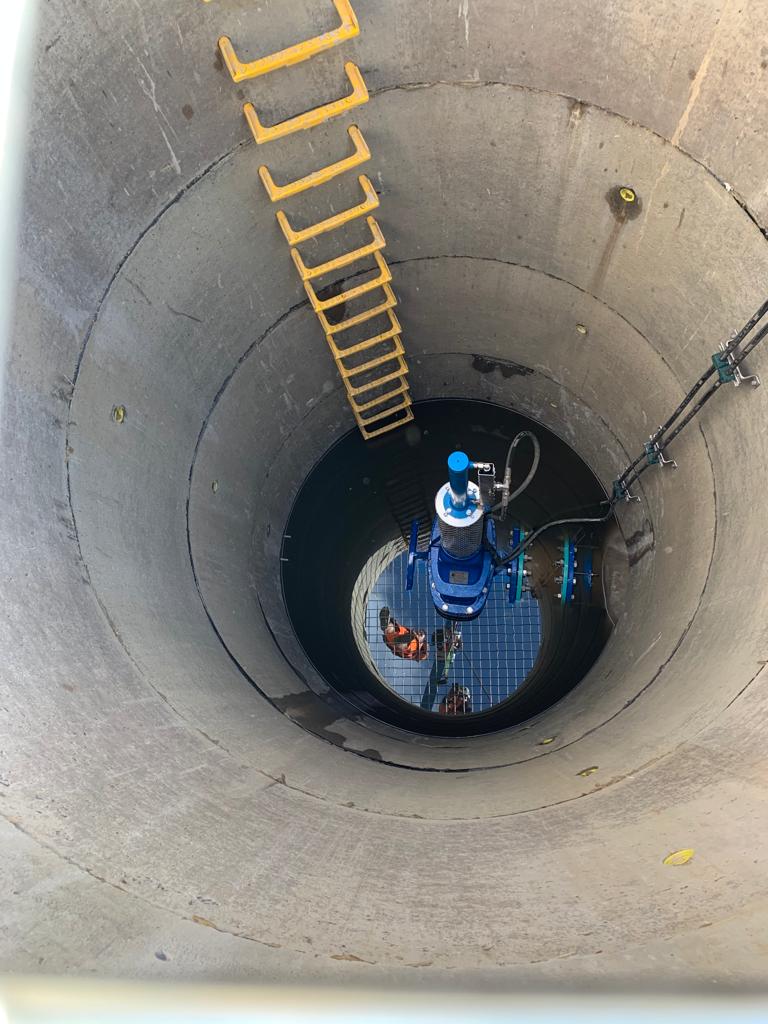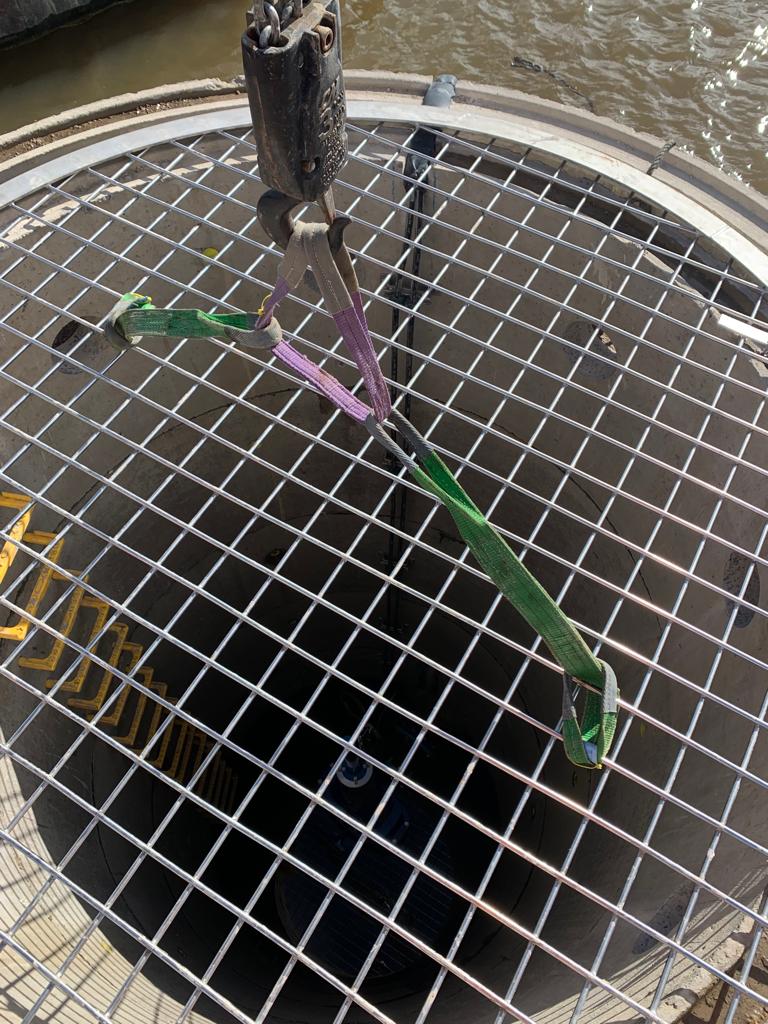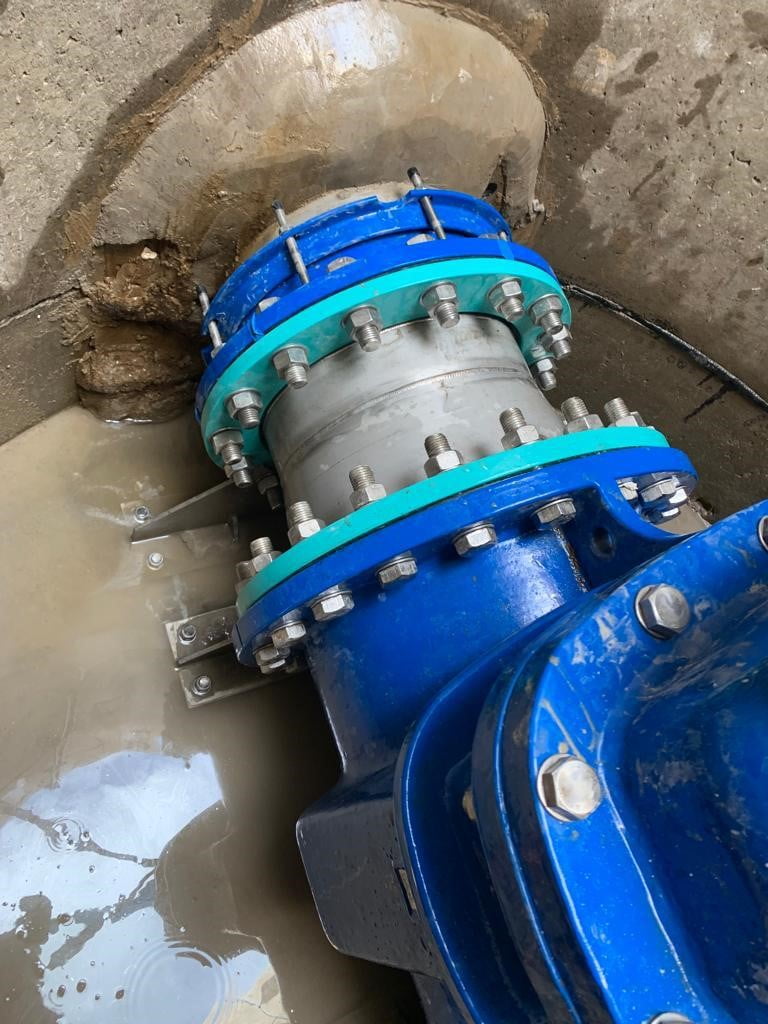Dry Access for Improved Reservoir Operation
Bosley Reservoir, opened in 1831 to feed the Macclesfield Canal, covering an area of 35 hectares and holding 1,350 million litres of water. EDS were asked by the client to install an engineering solution that would enable dry access to both the upstream and downstream of the scour pipe, we achieved this by constructing a caisson. The works enabled the installation of a new structural liner through an existing deteriorating pipe, a new hydraulic valve housed in the caisson to allow an operative to control water levels from the dam crest and provided an opportunity for general maintenance works.
Challenge
- To construct a caisson in a pre-defined location within the reservoir, that when pumped out would provide dry access for the client.
- To extend the existing pipe into the new caisson creating access via concrete rings for the new liner to be installed.
- To fit a new hydraulic valve and leads to be fed to the Dam crest.
- The high silt content of the reservoir meant the dive team would face poor visibility when installing the foundation slab.
- The placement of all large elements would need to be carried out by a single diver.
Solution
- Due to the upstream location of the pipe, EDS deployed a Nato pontoon system that held a lifting gantry, dive spread and tool station.
- The Nato pontoon system was also utilised to house a piling rig, this allowed the team to take core samples of the existing reservoir bed, and then use an excavator to clear the area around the pipe to make room for the caisson to be built.
- With the caisson needing to be positioned at the right level, in poor visibility, a scaffold system was used as screed rails so the dive team could level the stone fill. The team then placed the slab adjacent to the existing pipe. GPS equipment was used to verify installation levels and location.
- To enable the new and existing pipework to connect to the new hydraulic valve, EDS used a coring rig to core holes in the manhole rings prior to the rings being laid to create the caisson. Accuracy and precision were paramount so the pipe could travel through the caisson in the correct location.
- A grout wall was poured between the manhole rings to create a seal, and the chamber was then drained so the existing pipework could be re-lined.
- A new hydraulic valve was installed, and hydraulic leads fed up to the Dam crest so the valve could be operated at ease.
- To protect the valve against blockages, EDS installed a galvanized trash screen.

